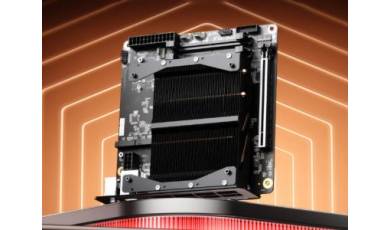Flash firmware on ZOJI S12
Mobiles >> Zoji >> ZOJI S12| Specifications | Reviews | Secret codes |
| Unlock phone | Root phone |
| Backup | Flash Firmware | Screenshot |
| Hard Reset |
How to flash ZOJI S12?
Why reinstall the firmware?
Errors start to appear in the operating system.
Some applications stop opening.
Many applications from the Play Market do not start.
The phone turns off for no apparent reason.
The phone slows down a lot during operation.
The OS does not match the system requirements of the smartphone.
Where can I find the firmware?
On the official Internet resource of the phone manufacturer.
On specialized services on which various developers lay out custom or official OS.
What should be done before installing the firmware?
Back up your contacts and user data and transfer it to your computer.
Insert your SD card into your phone. It must have enough memory to fit the firmware.
Find information about your smartphone model.
Charge your phone fully.
Download Firmware and Place it on the SD card.
Installing TWRP Recovery
Install the Official TWRP App via the Play Market. And run this application.
At the first start, you need to give consent to future manipulations, as well as consent to granting the Superuser rights to the application. Check the checkboxes and press the 'OK' button.
After moving to the next screen, select the 'TWRP FLASH' item and provide the application with root rights.
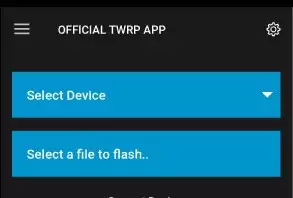
On the main screen of the application, select 'Select Device', and find your phone model.
After selecting the phone, the application will redirect the user to a web page to download the modified recovery environment image file. Download the proposed *.img file.
When the file is loaded, you need to return to the main screen of the Official TWRP App and press the 'Select a file to flash' button. Select the file downloaded in the previous step.
Now press the 'FLASH TO RECOVERY' button and confirm your choice, press 'OK'.
The recording process is very fast, and upon completion, the message 'Flash Completed Succsessfuly!' appears. Click 'OK'. The TWRP installation procedure can be considered complete.
Transfer the firmware and other necessary files to the SD card.
Insert a memory card into the device.
To reboot into recovery, you need to use a special item in the Official TWRP App menu, accessible by pressing the button with three stripes in the upper left corner of the main screen of the application. We open the menu, select the 'Reboot' item, and then click on the 'REBOOT RECOVERY' button. The phone will reboot into the recovery environment automatically.
Firmware via TWRP
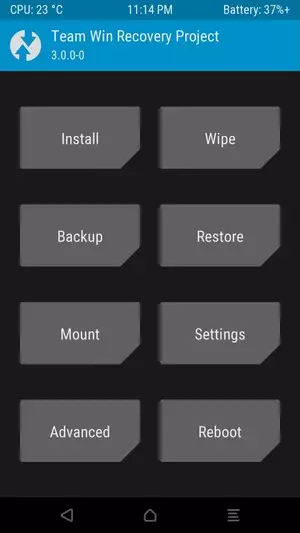
Before flashing, you need to clear the 'Cache' and 'Data' sections, press 'WIPE' on the main screen. This will delete all user data from the device, but avoid a wide range of software errors and other problems.
Now you can start flashing. Click the 'Install' button.
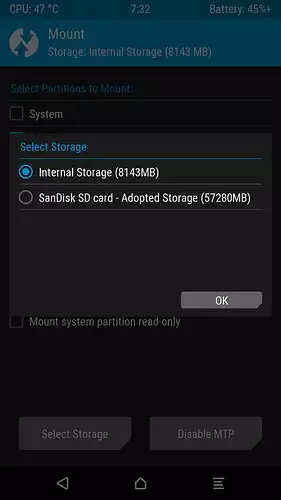
The file selection screen appears. At the very top is the 'Storage' button, select the location where the firmware file is located.
Select the storage to which the files were copied. Press the OK button.
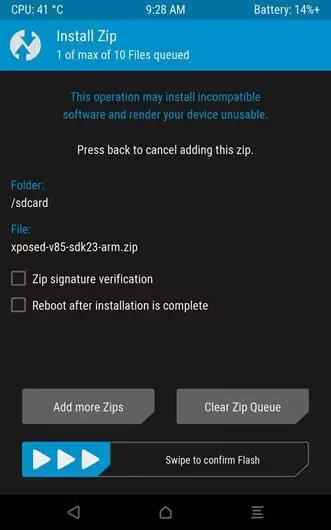
Select the firmware file and click on it. A screen opens with a warning about possible negative consequences, you need to check the item 'Zip signature verification', which will avoid using damaged files during recording.
The procedure for writing files to the device's memory will begin, accompanied by the appearance of inscriptions in the log field and the completion of the progress bar.
The completion of the firmware installation procedure is indicated by the inscription 'Successful'.
Summary: Brand & Model: Zoji S12; Product Release Date: 07 June, 2018; Fingerprint Sensor: No; Waterproof: No; Display Type: IPS, LCD capacitive touchscreen; Display Size: 5.0 inches qHD; Resolution: 480 x 960 Pixels, 24 bit color depth; Multitouch Input: Yes; Display Colors: 16M Colors; Pixel Density (In PPI): ~ 215 PPI Pixel per inch; Touch Screen: Multi Touch Support; Touchscreen Technology: Capacitive Touch; Display Protection: Yes; Features: qHD, IPS display~ 215 PPI Capacitive TouchMulti-touch2.5D Curved Glass Screen; Secondary Display: No; Screen to Body Ratio: 72%; Camera Type: Triple Camera Set UP (One Front Two Back); Rear Camera: 8 Megapixels 2 MP; Image Dimensions; ...
Comments, questions and answers on the flash firmware ZOJI S12
Ask a question about ZOJI S12



